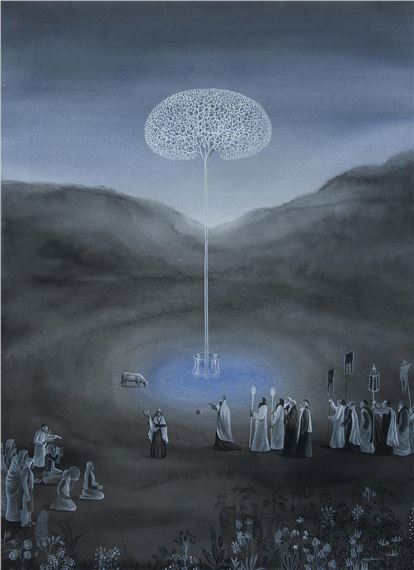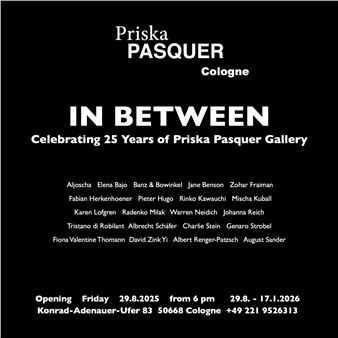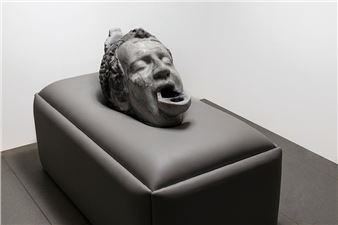Whose Memoirs? Whose Archive? An Empirical Survey
A work of art is an artefact that reflects the artist's sensory/aesthetic perceptions and shares the concerns about the time in which he/she lives. In other words, these artefacts created by the artists are considered part of the archival material used to construct the grand narration of social history. Jacques Derrida says, "the archons are first of all the documents' guardians." Joan M. Schwartz and Terry Cook explain it further on the function and potential of the archives: "This represents enormous power over memory and identity, over the fundamental ways in which society seeks evidence of what its core values are and has been, where it has come from, and where it is going. Archives are not passive storehouses of old stuff, but active sites where social power is negotiated, contested, confirmed".
A legitimate question is who has the credibility to select these suitable artefacts to create an archive. In other words, it is necessary to consider how people's living environments and experiences have represented in historical studies by compiling the archival materials. In a society where graded inequality has been existing for centuries, the dominant discourse has always been controlling the systems of knowledge ,cultural expressions and social life of the marginalized classes. Therefore, understanding social history written from the elitist perspective is inadequate.
By imposing the theoretical premises forcefully in the field of art practices, the specific group is always privileged to do only theory, and others are left with their living experiences/empirical knowledge. Eventually, it works as a negative factor against egalitarian principles. The question here is, "why ‘one has an innate ability only to do theory? Alternatively, whether the practicingtheory is only one's natural disposition?". It also raises a relevant question: why can an emotion or lived experiences not be a theory?
Taking this discourse further, in the exhibition entitled Whose memoirs? Whose Archive? An Empirical survey, artists from various cultural backgrounds shares their collective memory of their lived experiences. Eventually, this collective memory has become an archive of their empirical knowledge and becomes a representation of the enigmatic reality of the time and space they live in. These experiences can be something other than a first-person experience. Instead, it can represent shared /collective memory of the genetic past. This particular exhibition originated from the discussion over the widening gap between empirical and theoretical based practices. However, the works selected for the exhibition are not of an exclusive nature. Instead, myattempt is to blur the line between empirical and theoretical based practices so as to make it inclusive. Intellectual and aesthetic pleasure can merge in this experience when the work is visually intense and theoretically complex.

Recommended for you
A work of art is an artefact that reflects the artist's sensory/aesthetic perceptions and shares the concerns about the time in which he/she lives. In other words, these artefacts created by the artists are considered part of the archival material used to construct the grand narration of social history. Jacques Derrida says, "the archons are first of all the documents' guardians." Joan M. Schwartz and Terry Cook explain it further on the function and potential of the archives: "This represents enormous power over memory and identity, over the fundamental ways in which society seeks evidence of what its core values are and has been, where it has come from, and where it is going. Archives are not passive storehouses of old stuff, but active sites where social power is negotiated, contested, confirmed".
A legitimate question is who has the credibility to select these suitable artefacts to create an archive. In other words, it is necessary to consider how people's living environments and experiences have represented in historical studies by compiling the archival materials. In a society where graded inequality has been existing for centuries, the dominant discourse has always been controlling the systems of knowledge ,cultural expressions and social life of the marginalized classes. Therefore, understanding social history written from the elitist perspective is inadequate.
By imposing the theoretical premises forcefully in the field of art practices, the specific group is always privileged to do only theory, and others are left with their living experiences/empirical knowledge. Eventually, it works as a negative factor against egalitarian principles. The question here is, "why ‘one has an innate ability only to do theory? Alternatively, whether the practicingtheory is only one's natural disposition?". It also raises a relevant question: why can an emotion or lived experiences not be a theory?
Taking this discourse further, in the exhibition entitled Whose memoirs? Whose Archive? An Empirical survey, artists from various cultural backgrounds shares their collective memory of their lived experiences. Eventually, this collective memory has become an archive of their empirical knowledge and becomes a representation of the enigmatic reality of the time and space they live in. These experiences can be something other than a first-person experience. Instead, it can represent shared /collective memory of the genetic past. This particular exhibition originated from the discussion over the widening gap between empirical and theoretical based practices. However, the works selected for the exhibition are not of an exclusive nature. Instead, myattempt is to blur the line between empirical and theoretical based practices so as to make it inclusive. Intellectual and aesthetic pleasure can merge in this experience when the work is visually intense and theoretically complex.
Artists on show
- Balaji Ponna
- Debosmita Samanta
- George Martin PJ
- Gipin Varghese
- K L Leon
- K. P. Pradeep Kumar
- K. T. Mathai
- Madhu Venugopalan
- Manas Naskar
- Murali Cheeroth
- Om Soorya
- Pradeep L. Mishra
- Pradeep Naik
- Pradeep P P
- Puja Mondal
- Rachana Nagarkar
- Sanam C. Narayanan
- Subrat Kumar Behera
- Sujith S.N.
- Sumesh Kamballur
- Umesh P. K.
- Vinod Balak
Contact details


 ARTISTS
ARTISTS















